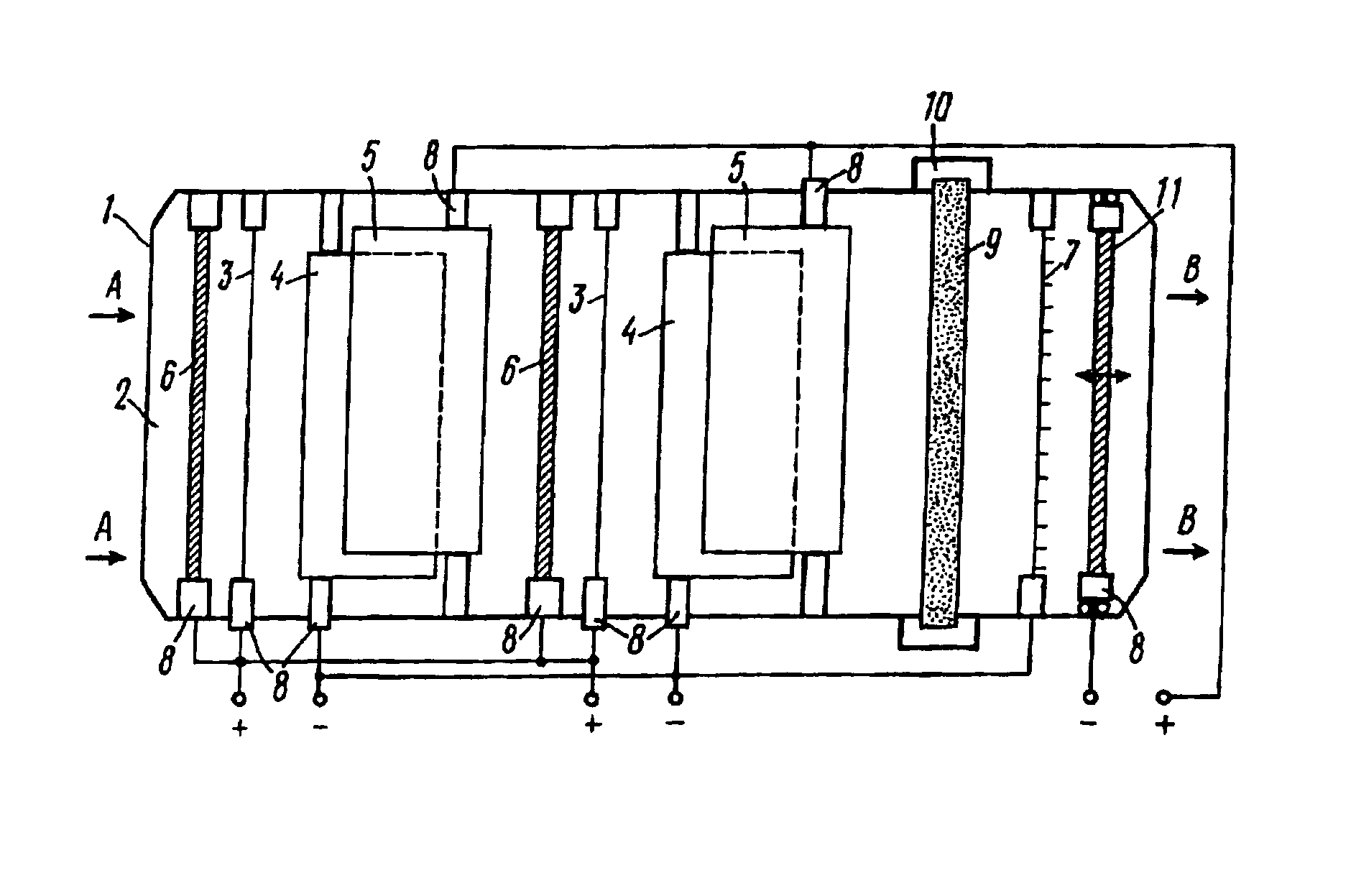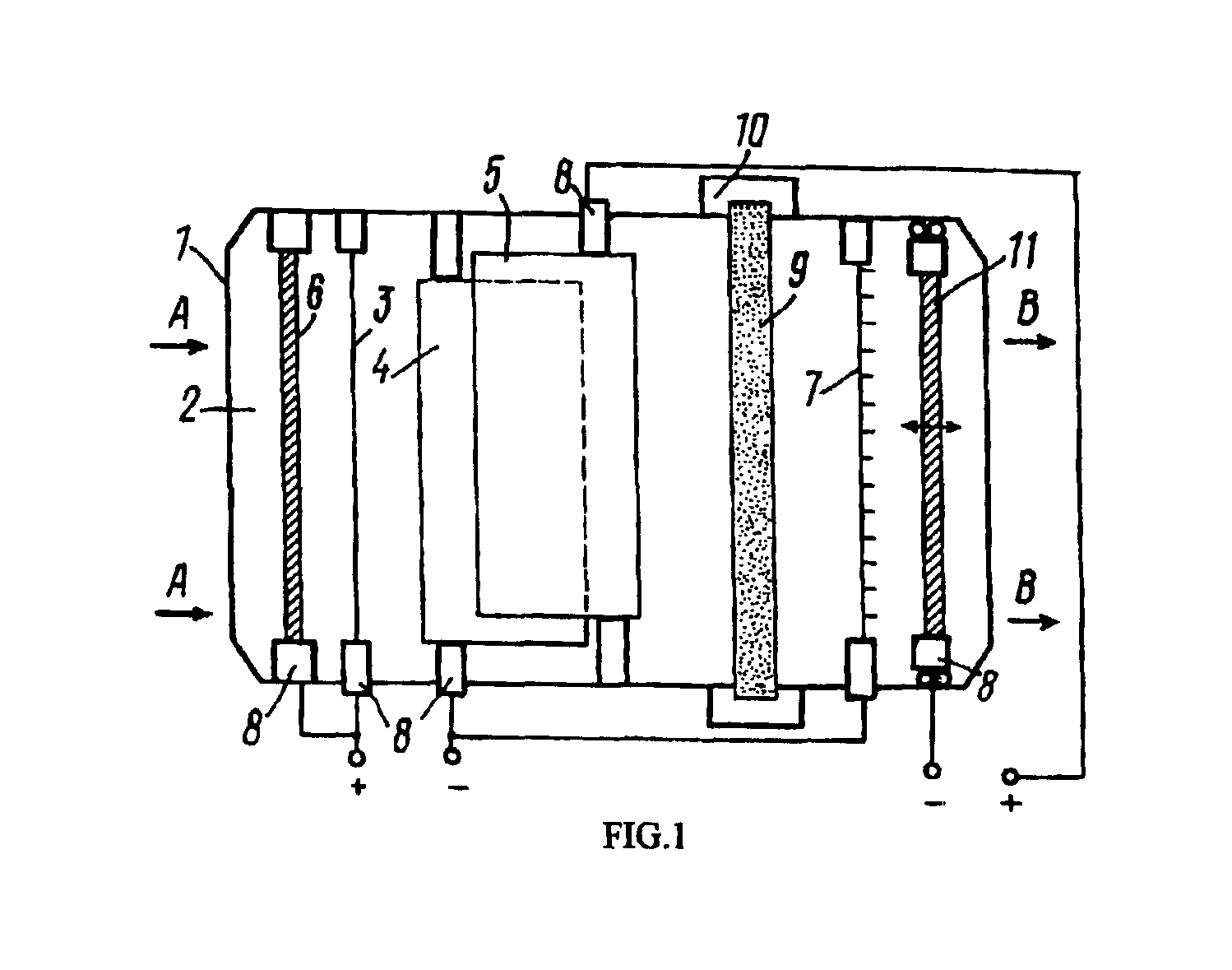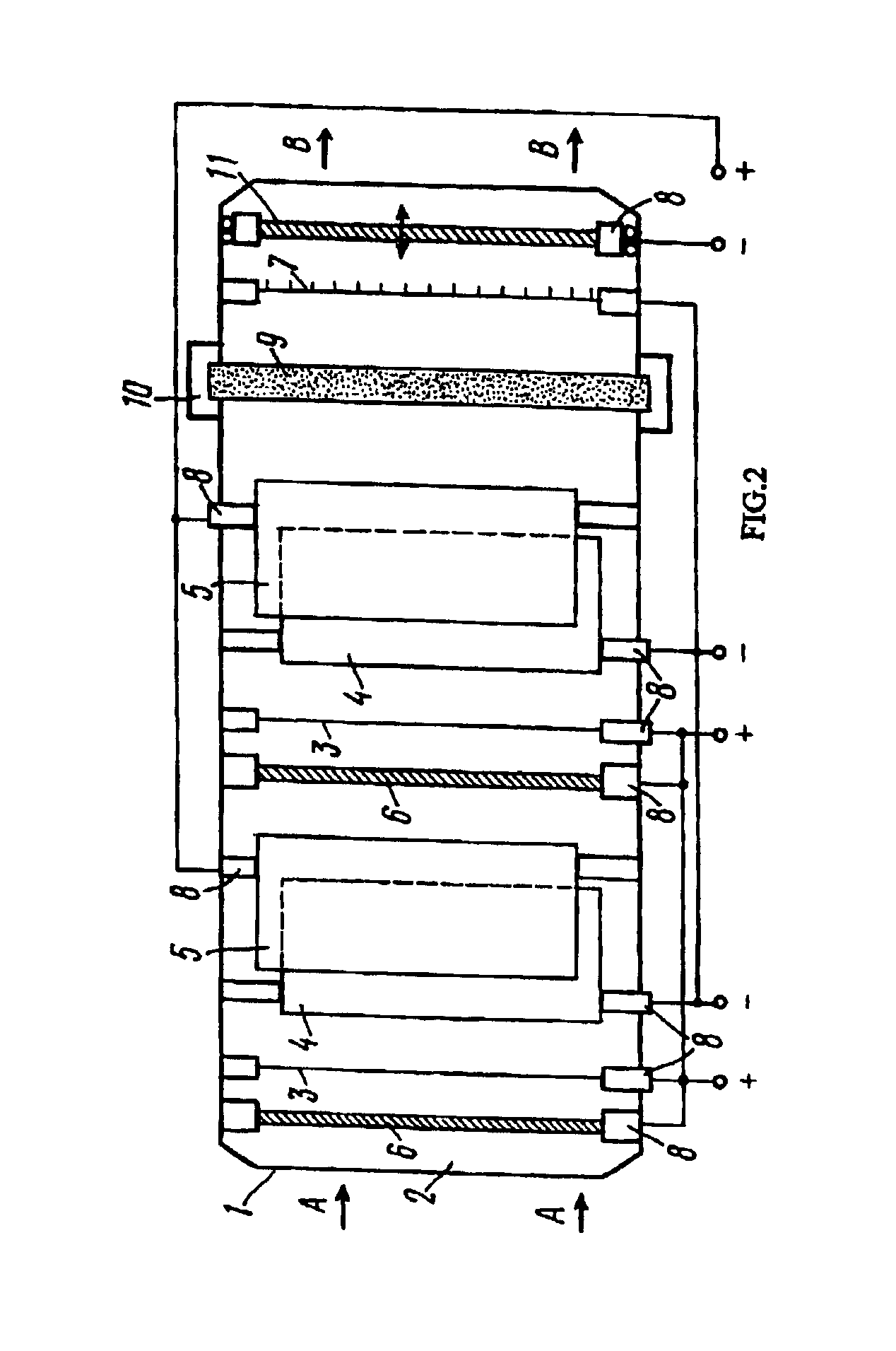Device for air cleaning from dust and aerosols
- Summary
- Abstract
- Description
- Claims
- Application Information
AI Technical Summary
Benefits of technology
Problems solved by technology
Method used
Image
Examples
Embodiment Construction
[0019]The proposed device comprises a body 1 (FIG. 1) with valve 2 for air, said valve having inlet and outlet (not shown in FIG. 1). Air enters the device through valve 2, shown in FIG. 1 by means of “A” arrow, while air output is shown by means of “B” arrow. Inside the body corona-forming electrodes 3 (positively charged) and precipitation electrodes 4 (negatively charged), as well as deflecting electrodes 5 (positively charged). Voltage volume supplied to the deflecting electrode 5 is less than voltage volume supplied to the corona-forming electrodes 3 and precipitation electrodes 4. In front of, and parallel to, corona-forming electrodes 3, a reflector of positively charged aeroions is placed at a distance. The reflector includes electrodes 6 electrically coupled with electrodes 3, electrodes 6 having bigger diameter than that of electrodes 3.
[0020]Behind deflection electrodes 5 an electrode-generator 7 of negatively charged aeroions is established, being electrically coupled wi...
PUM
 Login to View More
Login to View More Abstract
Description
Claims
Application Information
 Login to View More
Login to View More - R&D
- Intellectual Property
- Life Sciences
- Materials
- Tech Scout
- Unparalleled Data Quality
- Higher Quality Content
- 60% Fewer Hallucinations
Browse by: Latest US Patents, China's latest patents, Technical Efficacy Thesaurus, Application Domain, Technology Topic, Popular Technical Reports.
© 2025 PatSnap. All rights reserved.Legal|Privacy policy|Modern Slavery Act Transparency Statement|Sitemap|About US| Contact US: help@patsnap.com



